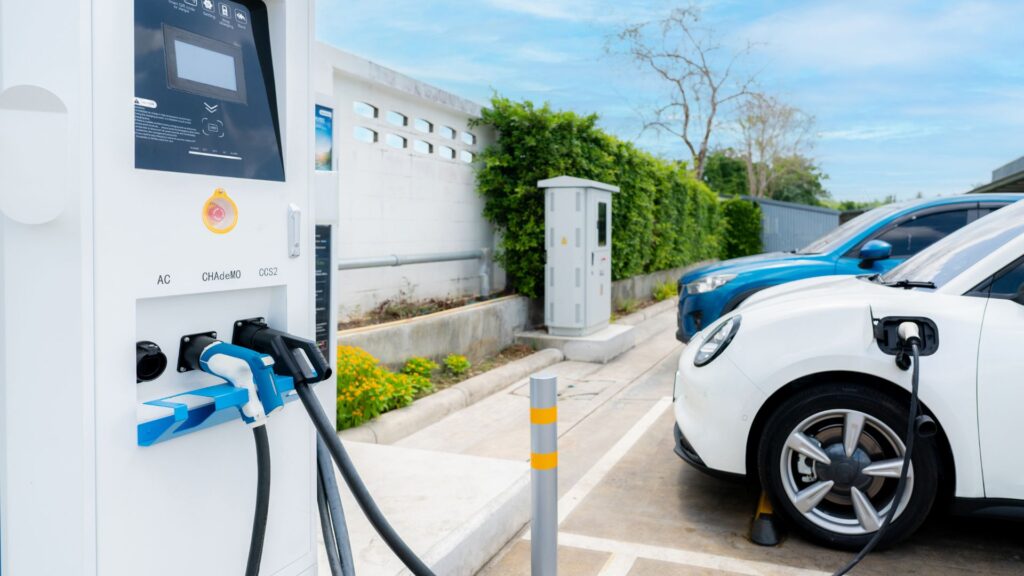“Powershoring is a corporate strategy designed to serve international markets by relocating energy-intensive industries to locations with clean, secure, cheap, and abundant energy,” explains Jorge Arbache, professor of economics and the originator of the concept. This innovative approach addresses sustainability, energy security, and economic efficiency while strengthening global supply chains. Unlike reshoring, nearshoring, or friendshoring—strategies often influenced by political and trade policies—powershoring is a business-driven model that prioritizes low-carbon industrial production, cost efficiency, and strategic proximity to consumer markets. As industries seek climate and nature-positive solutions, powershoring is emerging as a key enabler of decarbonization, energy transition, and green supply chain resilience. The Strategic Importance of Powershoring for Climate Action Historically, globalization prioritized low labor costs, leading to industrial concentration in Asia and other cost-effective regions. However, new economic and environmental realities are reshaping corporate priorities. Key drivers of this shift include: ✅ Climate Action & Net-Zero Goals – Reducing CO₂ emissions in industrial production.✅ Extreme Weather Events & Energy Disruptions – Increasing supply chain vulnerabilities.✅ Renewable Energy Transition – The need for stable, clean, and cost-effective energy sources.✅ Geopolitical Stability & Trade Security – Reducing risks from political and economic tensions.✅ Market Competitiveness & Green Economy Growth – Meeting global demand for sustainable, low-carbon products. According to Jorge Arbache, “Countries that combine renewable energy infrastructure, attractive labor and energy costs, and geopolitical stability stand to benefit the most from powershoring.” Powershoring offers a sustainable and cost-effective industrial strategy, ensuring long-term competitiveness in a world transitioning towards climate and nature-positive economies. Who Benefits from Powershoring? Countries and industries that meet specific clean energy, infrastructure, and economic criteria are best positioned to capitalize on powershoring. 1. Nations with Clean and Abundant Renewable Energy Countries with strong solar, wind, hydro, biomass, and geothermal energy resources can offer low-cost, sustainable electricity, attracting energy-intensive industries.📌 Examples: Brazil, Uruguay, Paraguay, Costa Rica, Norway, Iceland, Canada. 2. Regions Close to Major Consumer Markets Strategically located regions with clean energy and strong logistics enable industries to minimize transportation costs and carbon emissions.📌 Example: Latin America and the Caribbean (LAC), with proximity to North America and Europe. 3. Emerging Economies with Competitive Costs Developing nations with affordable labor, green energy incentives, and robust infrastructure offer a cost-effective and sustainable alternative for industrial relocation.📌 Examples: Brazil, Colombia, Peru, Chile. 4. Energy-Intensive Multinational Corporations Companies in steel, aluminum, glass, fertilizers, cement, automotive, and chemicals can reduce emissions, secure renewable energy, and align with sustainability regulations. 5. Consumers and Governments Powershoring enables the production of low-carbon goods at competitive prices, helping governments meet climate targets and consumers access sustainable products. Our research indicates that these beneficiaries align with real-world market trends. Sectors such as automotive, green steel, and industrial chemicals are already shifting towards low-carbon production hubs, confirming that powershoring is an emerging reality in the global energy transition. How Powershoring Accelerates the Green Transition Jorge Arbache highlights the role of powershoring in decarbonization and economic growth, stating: “By relocating industries to regions with clean, secure, and affordable energy, powershoring accelerates the global shift to a low-carbon economy while reducing costs for companies and consumers.” Key Climate and Economic Benefits: ✔ Access to cost-competitive renewable energy✔ Lower carbon footprints in industrial production✔ Stronger supply chain resilience✔ Compliance with strict environmental regulations✔ Accelerated innovation in green technologies Reports from IRENA and the United Nations Industrial Development Organization (UNIDO) confirm that industries relocating to clean-energy hubs can cut emissions by up to 40% while maintaining cost efficiency. This strategy aligns corporate interests with global climate action, ensuring that economic growth and environmental responsibility go hand in hand. Challenges and Risks of Powershoring Despite its advantages, powershoring is not without risks. Companies and governments must proactively address potential challenges, including: 🚧 Regulatory Barriers – Inconsistent policies delaying industrial investments.💸 High Initial Costs – Infrastructure and workforce training investments.🌎 Geopolitical Uncertainty – Trade policies and international conflicts affecting energy supply.⚡ Energy Price Volatility – Renewable energy dependence on weather conditions.🏭 Supply Chain Adaptation – The integration of new industrial hubs into global value chains. At Green Initiative, we reviewed global industrial policies and found that clear regulations, trade agreements, and investment incentives are crucial for successful powershoring implementation. Governments must ensure policy stability and support infrastructure development to mitigate these risks. Latin America’s Competitive Edge in Powershoring Latin America (LAC) is emerging as a global leader in powershoring due to its: ✅ High renewable energy share – Countries like Uruguay, Costa Rica, and Paraguay operate on nearly 100% renewable electricity.✅ Abundant green fuel resources – Including ethanol, biodiesel, and green hydrogen.✅ Strategic market proximity – Reducing emissions and costs for exports to North America and Europe.✅ Favorable investment climate – With strong policies for sustainable industrial development. Brazil, in particular, stands out. Arbache notes, “Brazil has an extensive renewable energy infrastructure, a highly integrated electricity grid, and significant industrial hubs, making it an ideal powershoring destination.” Powershoring’s Strategic Benefits for Europe and China 🌍 Europe: Strengthening Green Industry & Reducing Costs Europe faces rising energy prices, supply chain instability, and net-zero policy pressures. Powershoring provides a cost-effective strategy for European industries to: ✔ Secure renewable energy at lower costs✔ Reduce dependency on fossil fuel imports✔ Enhance industrial competitiveness and sustainability✔ Meet EU Green Deal targets efficiently 🇨🇳 China: Expanding Access to Clean Markets Although powershoring is often viewed as a Western strategy, China can also benefit. By investing in clean energy hubs abroad, China can: ✔ Diversify trade partnerships with sustainable economies✔ Expand access to green technologies✔ Improve its global reputation as a climate leader✔ Reduce carbon-related trade barriers The Role of Governments and Global Institutions To maximize powershoring’s potential, governments and financial institutions must create strong policy frameworks and investment incentives. 🏗 Infrastructure Expansion – Ports, industrial zones, and renewable energy grids.💰 Green Financing & Incentives – Tax benefits and investment de-risking.📜 Regulatory Stability – Clear and consistent environmental policies.🎓 Workforce Training – Skilled labor programs for green industries.📢 International Promotion – Positioning powershoring as a climate-positive investment strategy. Development banks like IDB,




